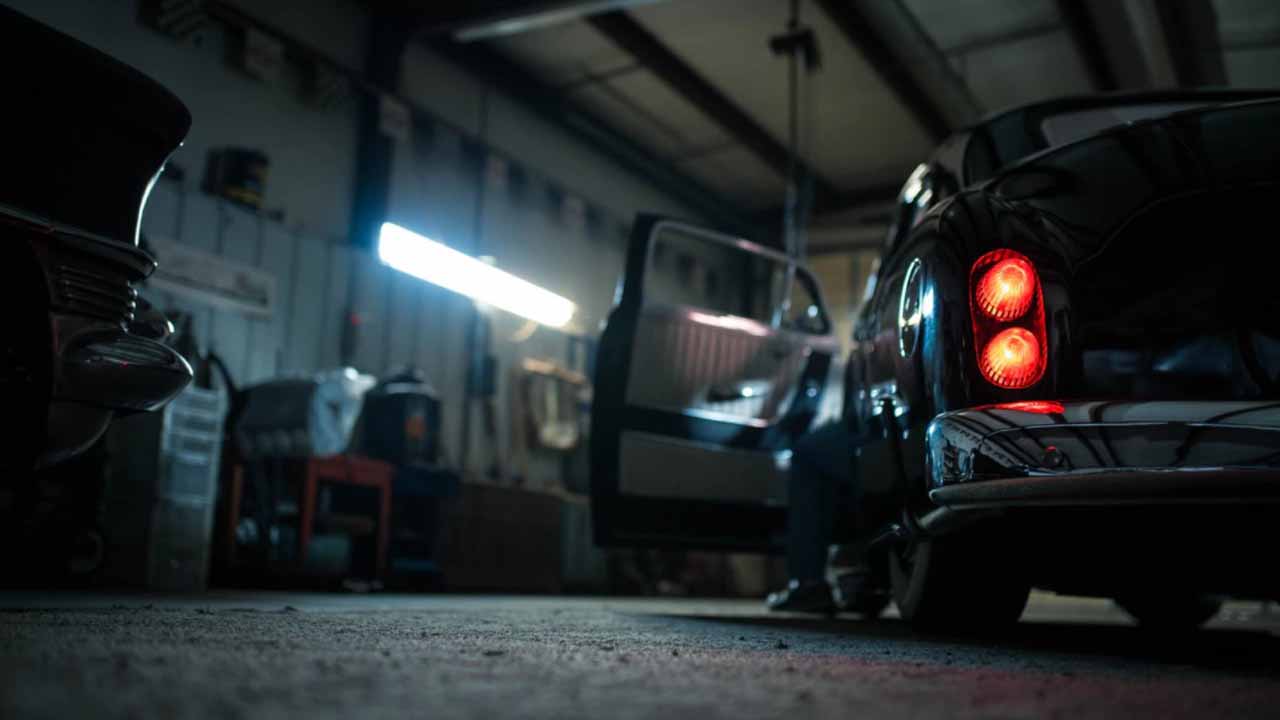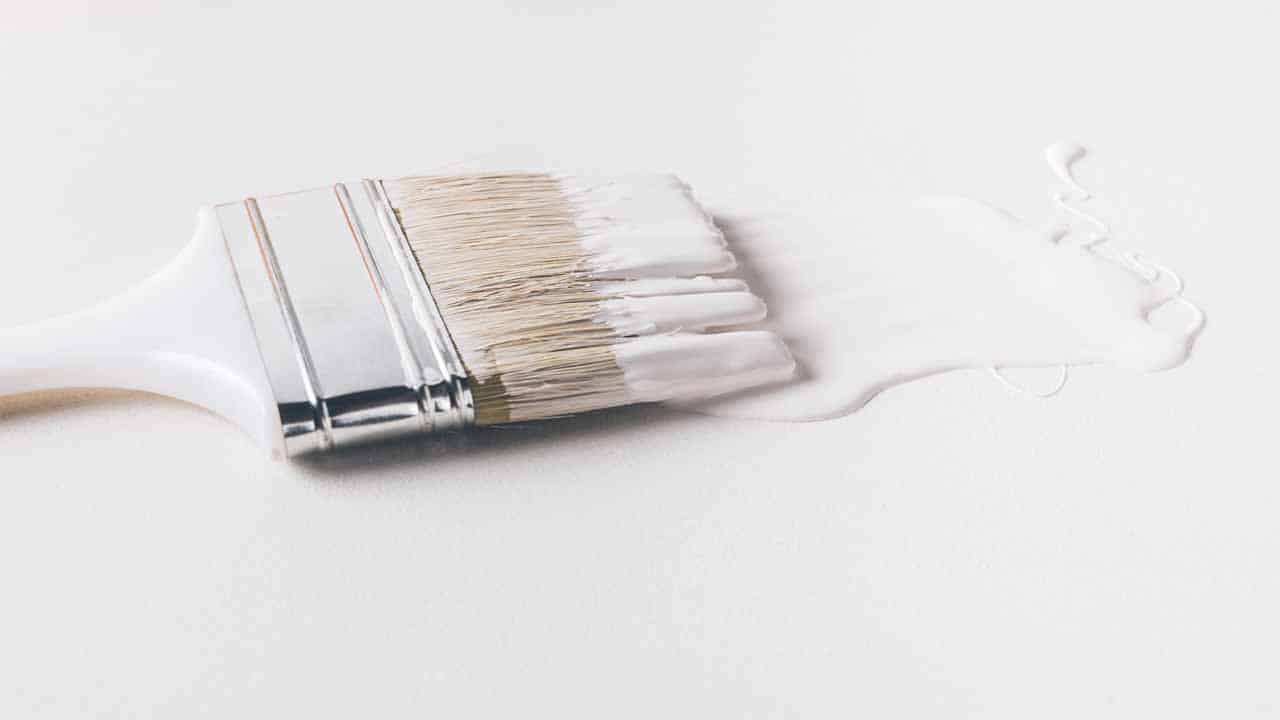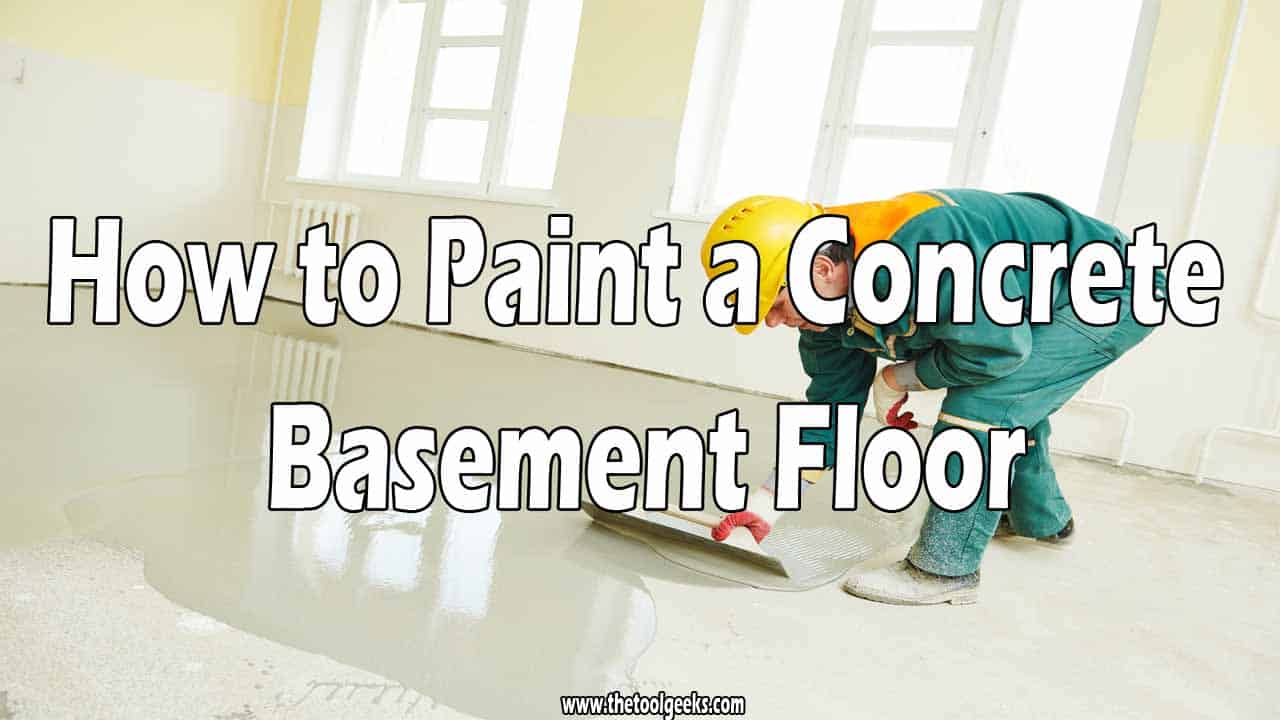How to Paint a Concrete Basement Floor (& What Paint Type To Use)?
TheToolGeeks.com is a participant in the Amazon Services LLC Associates Program and other affiliate advertising programs. We may earn from qualifying purchases. (Learn More).
Let’s face it. Painting the basement floor isn’t something everyone does. Only a handful of people paint their basement floor. But if we are saying the truth here, we can’t argue the fact that painting a concrete basement floor adds more beauty to the room and makes the basement look more appealing.
If you have ever seen a painted concrete basement floor, then you know what I’m talking about. If you don’t, just check for a picture online and you will be wowed.
Painting the concrete basement floor makes the floor look more attractive, it adds style to the room and it protects the floor making your concrete basement floor last longer. So, how to paint a concrete basement floor? Let’s find out.
Jump To Page Contents:
What Tools Do You Need to Paint the Concrete Basement Floor?
To paint your concrete basement floor, you need the following tools and materials.
- A sander preferably an orbital sander
- It’s best to have sandpaper of different grits since you will be sanding concrete. The best sandpaper for sanding concrete is diamond sandpaper.
- A scrubbing brush
- A bucket or two of the required paint. Depending on the size of the floor, you might need more than two paint cans. For this guide, the two-part epoxy resin for concrete floors is advised.
- A vacuum to clean the floor
- Paint roller to apply the paint
- Concrete sealer to seal the cracks and holes in the concrete floor.
- Water
- Detergent
- Concrete primer
Related Read — How to Paint Basement Ceiling?
How to Paint a Concrete Basement Floor?
Painting concrete basement floor is not the easiest of tasks. The task usually requires a bit of effort from the Painter or the DIYer.
You will also need to complete a few tasks before painting the floor, so you should get an extra pair of hands if you can.
Also, remember to put on your safety gear like your pair of goggles, breathing protection, and a pair of gloves before taking on this task.
The following steps have been carefully drafted and explained to make the task easier, so let’s get on with it.
Remove All Objects From the Concrete Basement Floor
Basements are usually used as storage space where we dump all objects and used items. This step might be exceptionally tedious depending on how many items and objects you have in the basement.

You should remove all the objects and materials in the basement so you can have unrestricted access to the basement floor.
You can also use this opportunity to clean and wipe all the objects in the basement. Who knows, you might even find an item you thought you lost.
Related Read — Best Sprayer For Home Use?
Wash and Clean the Floor
You need to wash and clean the basement floor before applying any paint. Basement floors are usually dirty so this isn’t a task you can just use a rag for.
Start by sweeping the floor with a broom or you can easily vacuum the floor if you have a vacuum. After vacuuming the floor, mix a bit of detergent with water and use it to wash the floor. You can use a scrubbing brush to scrub the concrete floor so it is clean.
After scrubbing the floor, use a mop and clean water to clean the floor. Then leave it to dry. It can take a day for the concrete floor to get fully dry. After the floor has dried, you can move on with the task. This isn’t a step to skip because having dirt and debris on the concrete floor will lead to a very poor paint job after.
Related Read — How to Remove Paint From Concrete Floors?
Fill the Cracks and Holes
Due to heat, pest activity, and poor maintenance of the concrete basement floor, you will notice cracks and holes in the concrete floor of your basement.
You are to repair all these holes and cracks in the floor before applying the paint. Most people usually believe that they can conceal these cracks and holes by applying multiple coats of paint on the affected spot. This wouldn’t work.
No matter how many layers or coats of epoxy resin you add to a crack or hole, the crack will still be obvious after the paint dries. Not to mention the fact that you will be wasting paint.
So the best thing to do is to fill the cracks and holes with a concrete filler. Concrete fillers are usually white pastes or compounds that can be used to fill holes and cracks in concrete floors and walls. The paste will harden after a while and you can go ahead with your task.
Sand the Concrete Floor
After using the concrete filler, you will notice some imperfections on the spot that you applied the concrete filler. So you will need to sand the concrete floor. Sanding helps to get rid of gouges, edges, and imperfections. It also makes the concrete floor smoother and ready to absorb the paint.
Diamond sandpapers are usually used on concrete surfaces because regular sandpaper can’t sand concrete floors well. Start with a slightly coarse grit like the 80-grit sandpaper. Since the concrete basement floor is usually large and wide, sanding by hand isn’t usually an option. You should use a sander to sand the concrete floor. You can use an orbital sander for this task.
Start by attaching the 80-grit sandpaper to the bottom of the orbital sander. Then use that to sand the floor. If the sandpaper you are using isn’t doing a good job anymore, you can replace it with another. So you should have plenty of sandpapers at your disposal.
After sanding with the 80-grit sandpaper, you should continue with finer sandpaper. You can use the 120-grit sandpaper and finish with 180-grit sandpaper. Ensure to use sandpaper recommended for concrete floors. That’s why diamond sandpapers are the best.
Related Read — Best Sprayer For Stains?
Apply Concrete Primer
Priming before applying a two-part epoxy paint isn’t always done. The two-part epoxy resin is usually strong enough to stick to the surface well without the need for a primer.
However, if priming is recommended by the manufacturer of the two-part epoxy resin you buy, then you should prime the concrete floor before applying the paint.
Ensure that the primer you use a recommended for concrete floors and it can be used as a base coat for the two-part epoxy you plan on applying later. Priming is done the same way you will apply the paint. You can use a roller or a paintbrush to apply the primer. You should start at the farthest part of the basement floor.
The primer doesn’t have to be applied smoothly. Just ensure that there isn’t any paint bubble after you have applied the primer. Concrete primers can take a few minutes or hours to dry. Most times, you will be required to wait a whole day before you can continue your task. This allows the primer to cure properly.
Related Read — Best Sprayer For Walls?
Mix the Two-part Epoxy Resin
The two-part epoxy resin isn’t a paint that can be used directly from the can. You need to mix the paint first before using it. There are different ratios required to mix the paint.
You might be required to mix the resin and the hardener with the same or equal amount. This is usually the right way to ox the two-part epoxy resin.
Ensure to check the instructions indicated by the manufacturer on the container of the epoxy resin you get. This will explain how to mix the paint in the correct ratio.
Use Painters Tape To Mark The Concrete
Now, it’s time to paint the concrete floor. Before you go on to apply the paint, you should use painter’s tape or duct tape to mark the floors.
This is very important if you aim to design the floor or use a particular paint in one part of the floor. The painter’s tape will serve as a line so you know where to paint and where to stop. You should also tape the base of the walls so the paint doesn’t stain the walls.
Apply the Two-part Epoxy
You can use a paintbrush or a roller to apply the two-part epoxy paint. For this guide, start by using a paintbrush to paint the corners and edges of the floor.
The parts where you have the door, the base of the wall, and other corners should be painted with a paintbrush. Using a roller on these parts wouldn’t be a good fit because the roller will be too big to fit into these corners. After using a paintbrush to paint these corners, you can now use a roller to paint the main floor.
You should stick to the instructions regarding how to apply the paint. You will need more than one coat or layer of two-part epoxy paint on a concrete floor.
Two-part epoxy paint can take up to 24 hours to be dry enough for another coating. After the first coat, wait for the time stated by the manufacturer and then apply another coat. Two coats of two-part epoxy are usually enough.
Two-part epoxy does not usually need another top coat but if you require one, you should let the epoxy cure before applying the topcoat.
Clean Up
After painting the floor, you should leave it to dry. You can use a paint thinner to clean the equipment used to paint the floor. When the floor cures, you can then enjoy the new look and feel of your concrete basement floor.
Related Read — How Much Does it Cost To Paint a Garage Floor?
What Type of Paint Is Used on Concrete Basement Floors?
There are different types of paints used on concrete floors. Each paint type has its unique characteristics, look, and finish. However, one paint type commonly used on concrete floors is the two-part epoxy paint.

Two-Part Epoxy
Two-part epoxy paint is a paint that uses a chemical reaction to bond and dry rather than evaporation. Most paints such as acrylic paint, oil paint, and the likes use a solvent or a vehicle in the paint’s formula.
For acrylic paint, the paint’s solvent is water. When the water evaporates from the paint’s coating, the paint will dry. This is different for the two-part epoxy resin.
The two-part epoxy resin has two parts as the name connotes. The resin and the hardener. Both parts are usually added in the same quantity and mixed.
The mixture starts a chemical reaction that causes the epoxy resin to harden after it is applied to the surface. The resulting finish from the epoxy resin is usually very durable, fine, and waterproof. This is why epoxy resin is usually used on concrete floors.
Related Read — How to Paint Rubber?
Should You Use Other Paint Type For Concrete?
Using any other paint type on the basement concrete floor wouldn’t be a good fit. This is because the paint will start to crack and end up being damaged quickly. With the two-part epoxy resin, you are guaranteed a beautiful floor that will stand the test of time and continuous use.
Two-part epoxy resins can last for years regardless of how the floor is used. Two-part epoxy resin is also weather-friendly. The paint can withstand virtually any weather condition without giving way.
Another advantage of the two-part epoxy resin is that the paint can be modified. Two-part epoxy resin is usually flexible enough to be modified with other resins, fillers, pigments, and the likes.
Perhaps the biggest advantage of the two-part epoxy resin is that the epoxy resin is waterproof and very strong. Even if you turn the basement into a courtyard or a recreation space, the epoxy resin wouldn’t wear or tear.
It also wouldn’t allow water to get underneath because the chemical reaction makes the resin very strong. So no matter how much you use the concrete floor, it would still retain its look and it wouldn’t get damaged for at least, a few years.
Related Read — How Much Does it Cost To Paint Your Bike?
Amazon and the Amazon logo are trademarks of Amazon.com, Inc, or its affiliates.

